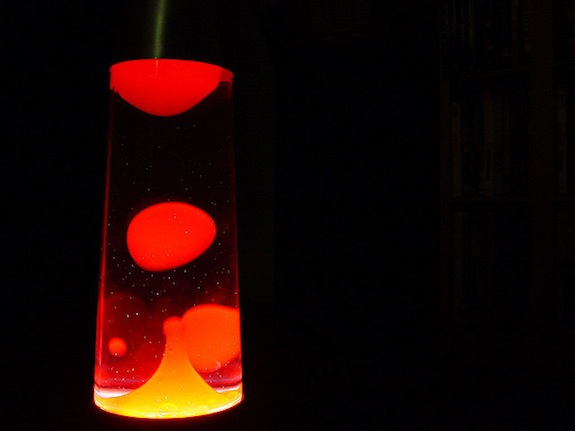This Town Has Spent 11 Years Planning a 60 Foot Lava Lamp
Everybody loves lava lamps. But perhaps nobody loves lava lamps quite as much as the town of Soap Lake, Washington

Image: pietroizzo
Everybody loves lava lamps. But perhaps nobody loves lava lamps quite as much as the town of Soap Lake, Washington. In Soap Lake, they’ve been planning to build a 60-foot-tall lava lamp for eleven years. And they’re not giving up any time soon.
The Magazine sent John Patrick Pullen to Soap Lake to see how and why the people there are planning to construct this wonder of “light, hot wax, and oil.” He writes:
Impractical, expensive, underfunded, and perhaps even technologically impossible, the Soap Lake Lava Lamp has proved more complicated to build than anyone had ever imagined. And as the concept became bigger than the city itself, they had no alternative but to build it. “The lava lamp will happen in Soap Lake,” says Wayne Hovde, the city’s former mayor. “When? I can’t tell you — but it will happen.”
This year marks the 50th anniversary of the lava lamp’s invention, and the birthday has renewed the spirits of the town’s 1,514 residents. The idea of the lamp started as a tourist attraction. (Who wouldn’t want to go visit a gigantic lava lamp, set against a nearly-alien background of high deserts and winding rivers?) In 2002, Brent Blake pitched the idea, estimating it would cost only $100,000 to build. In many places, someone proposing such a thing would be laughed out. But the locals liked Blake, and they liked his weird posters and marketing website. And even just the notion of building a giant lava lamp attracted tourists who had read stories in the BBC and the Los Angeles Times about the proposed lamp.
Plus, Soap Lake didn’t have much else going for it. The BBC described the town this way:
The little town of Soap Lake, in central Washington State, is well on its way to becoming a ghost town.
Even on a weekday, the main street is almost deserted. It is easy to imagine that classic tumbleweed somersaulting across the road. It certainly would not need to look both ways.
Two restaurants are up for sale. And the dusty antique shops trade only on the internet – it is not worth their while opening for so few visitors.
And the town has tried other, more conventional ways to draw tourists. They built a theater for visiting performers. At one point they tried to turn the town into a Wild West themed attraction, but another town did it better. For Blake, the lamp makes sense as a way to draw people.
The problem that Blake didn’t quite foresee, however, is how difficult it is to actually build a 60-foot-lava lamp. Pullen breaks down the numbers:
To absorb and diffuse heat, a 60-foot lamp would need glass that is 12 inches thick at the base and tapers to four inches at the top — something that has never been manufactured, let alone transported. At that size, the lamp would hold 100,000 gallons of liquid, says Blake, and the precise mixture of oil and wax would depend on the size.
The power required to heat “lava” that size would be immense, not to mention frivolous and environmentally neglectful. And then there are the catastrophic concerns of the disaster that would ensue if the lamp cracked.
At one point, Target donated a 50-foot lava lamp that they had built to hang in Times Square. But when it got to Soap Lake, it was in pieces, and no one could figure out how to put it back together, and some parts were broken. Pullen writes that Soap Lake would have had to ship the entire thing to the company who made it for repairs, which would cost $600,000 alone.
Now they have a new man on the job. Andrew Kovach, an architect, came up with a new plan. You can see a video of the new idea here. But it’s not built, and there’s no guarantee it ever will be. If it is, you can be sure that people will go see it.
More from Smithsonian.com:
/https://tf-cmsv2-smithsonianmag-media.s3.amazonaws.com/accounts/headshot/Rose-Eveleth-240.jpg)
/https://tf-cmsv2-smithsonianmag-media.s3.amazonaws.com/accounts/headshot/Rose-Eveleth-240.jpg)